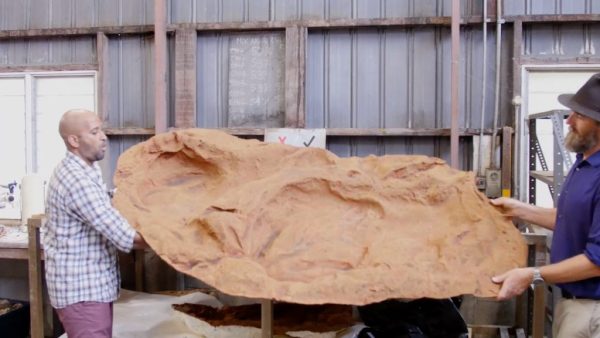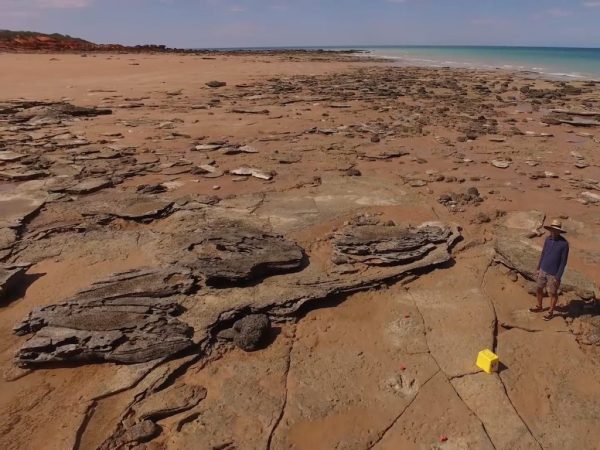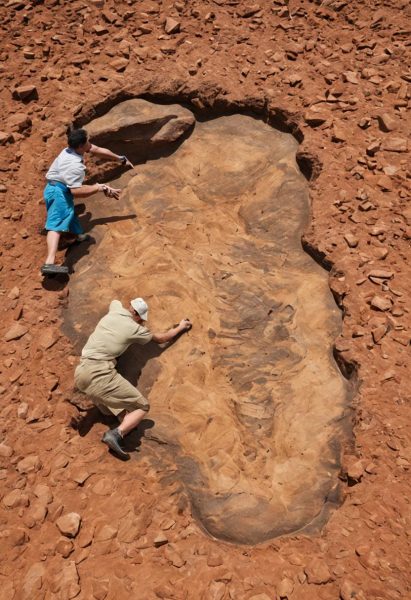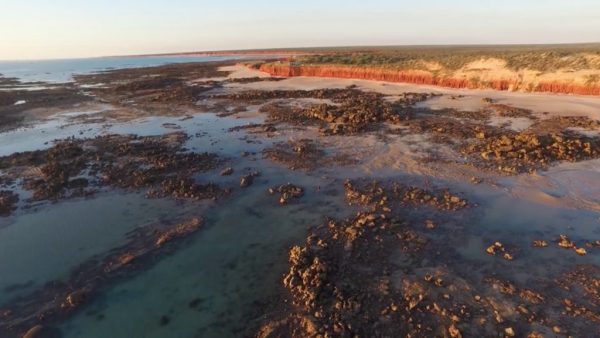
In the remote and rugged coastline of Western Australia lies a hidden prehistoric treasure trove—a 25-kilometer stretch of land that harbors thousands of approximately 130-million-year-old dinosaur footprints. These ancient imprints, preserved in sandstone, offer a fascinating glimpse into the world of dinosaurs that once roamed this region during the Jurassic period.
Recent findings, published in The Journal of Vertebrate Paleontology, have shed light on the significance of this remarkable discovery. According to Steve Salisbury, a paleontologist at the University of Queensland and the lead author of the study, this site, known as Walmadany, stands unparalleled in the world in terms of the sheer abundance and diversity of dinosaur tracks it preserves.
At Walmadany, researchers have identified a multitude of dinosaur tracks representing various species that once inhabited this ancient landscape. Among these tracks, one stands out as particularly extraordinary—the largest dinosaur footprint ever found.

Measuring approximately 1.75 meters in length (about 5 feet, 9 inches), this massive footprint is believed to have been left by a giant sauropod, a long-necked herbivorous dinosaur.
The discovery of such an enormous footprint provides valuable insights into the size and behavior of sauropods that inhabited this region millions of years ago. By studying the shape and depth of the footprint, scientists can infer details about the anatomy and locomotion of these colossal creatures, offering clues about their ecology and evolutionary adaptations.
The significance of the Walmadany site extends beyond the scientific realm—it represents a unique opportunity to connect with Australia’s ancient natural history and heritage.

As one of the most diverse and well-preserved dinosaur track sites in the world, Walmadany offers a window into a bygone era, allowing us to imagine the sights and sounds of a prehistoric landscape teeming with life.
However, accessing and studying this prehistoric treasure trove presents its own set of challenges. Situated along a rugged coastline, the Walmadany site is only accessible at low tide, when the sea recedes and reveals the ancient footprints hidden beneath the waves.

Researchers must navigate the treacherous terrain and contend with the presence of sharks and crocodiles that inhabit the region, making each expedition a daring adventure in paleontological exploration.
The discovery of the largest dinosaur footprint in Australia’s ‘Jurassic Park’ not only adds to our understanding of prehistoric ecosystems but also underscores the importance of preserving and protecting such invaluable natural heritage sites.

By safeguarding these remnants of ancient life, we ensure that future generations can continue to marvel at the wonders of our planet’s distant past.
In conclusion, the discovery of the largest dinosaur footprint in Australia’s ‘Jurassic Park’ represents a significant milestone in paleontological research, offering a tantalizing glimpse into the world of dinosaurs that once roamed this ancient landscape. As scientists continue to unravel the mysteries hidden within these fossilized footprints, the legacy of Walmadany as a prehistoric treasure trove will continue to captivate and inspire generations to come.





